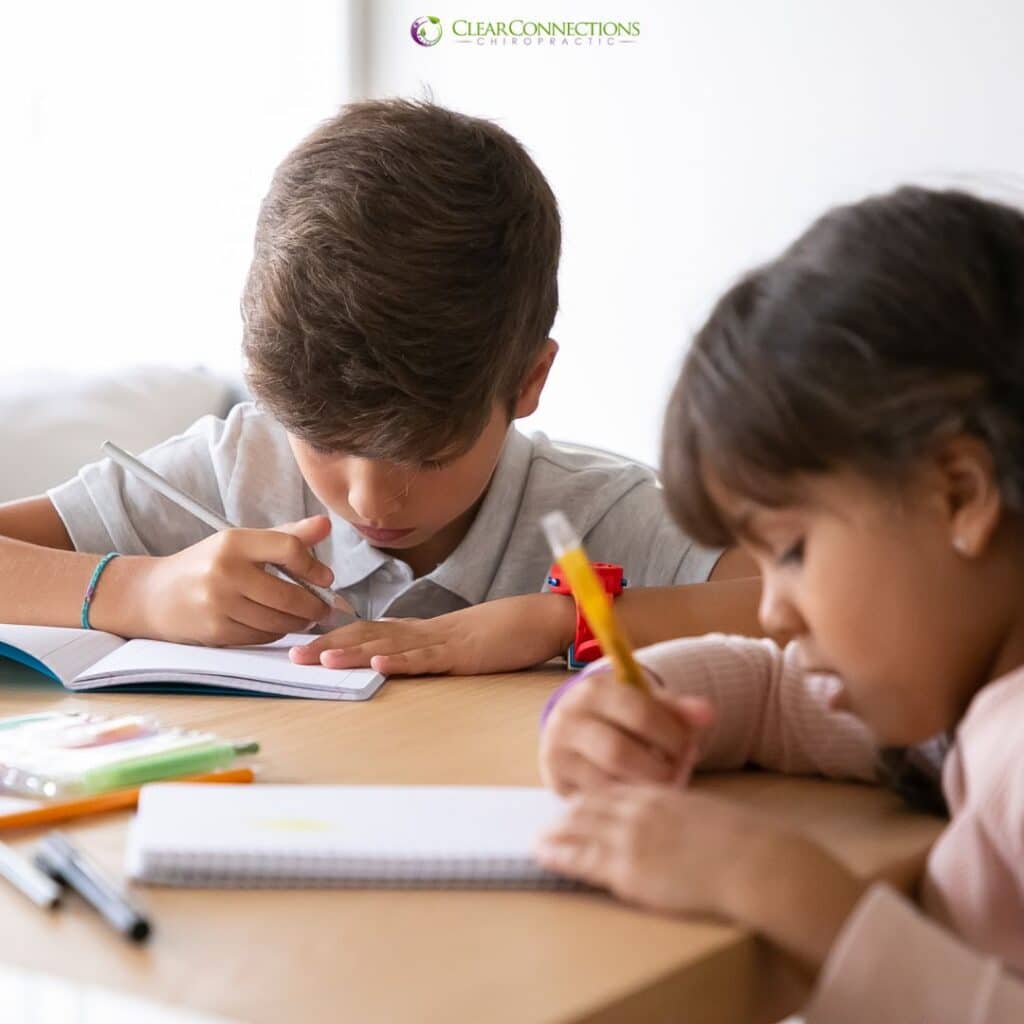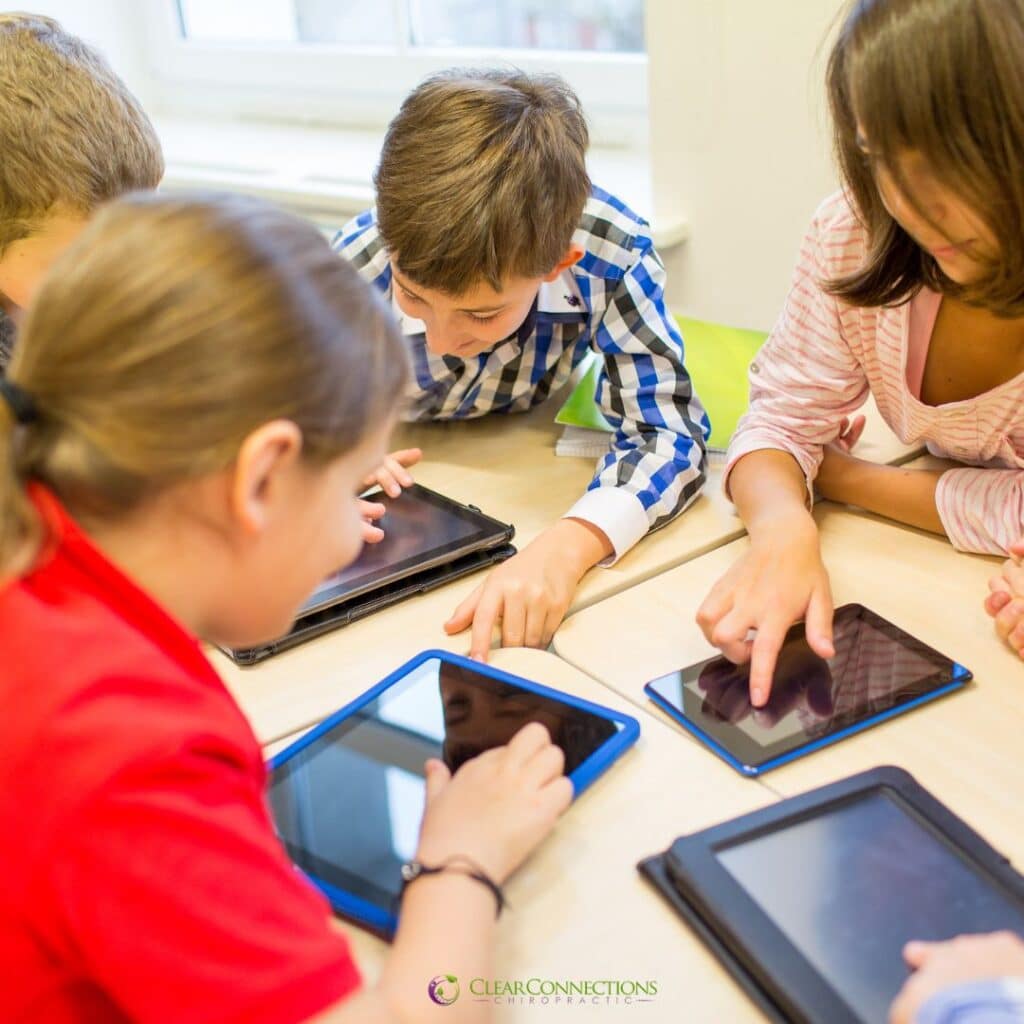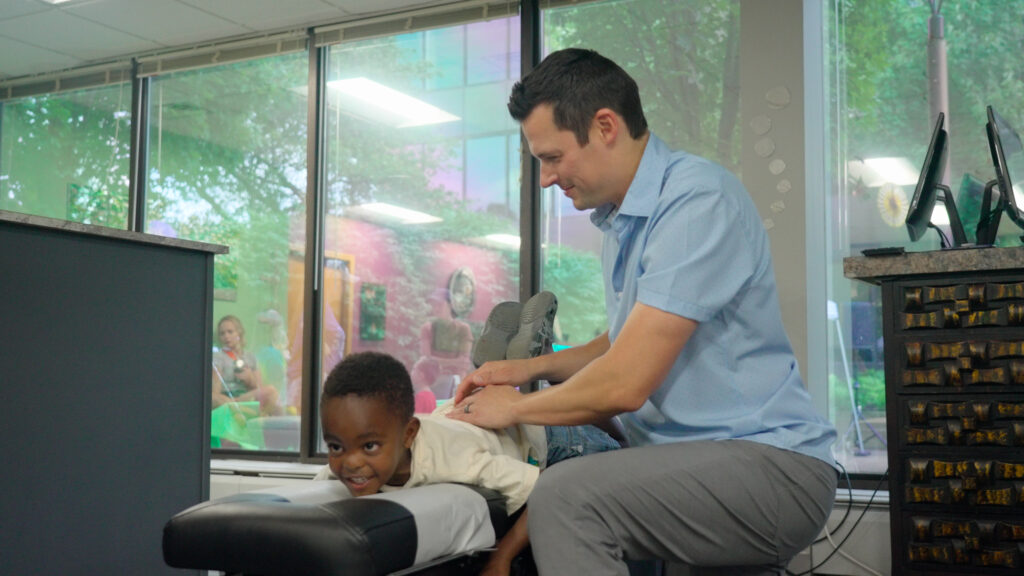Chiropractor Grand Rapids, MI
Contact Us
Grand Rapids, MI 49506
Working Hours
Monday 10am-6pm
Tuesday 10am-6pm
Wednesday 10am-6pm
Thursday 3-6:30
Friday 10am-1pm
Saturday Closed
Sunday Closed
Does your child struggle with focus, meltdowns, or emotional ups and downs? It may not just be “behavior.” Many times, the root cause lies in how the two sides of the brain — the left (logic, structure) and the right (creativity, emotion) — are developing.
This concept is called hemisphericity. When one side of the brain grows faster than the other, kids may experience challenges with learning, self-regulation, and attention. The good news? Parents have powerful tools to help strengthen both hemispheres and create balance.

Think of your child’s brain like a sports team. The left brain is the planner — it thrives on structure, organization, and problem-solving. The right brain is the creator — it fuels imagination, emotions, and big-picture thinking.
When one side is “carrying the team” while the other lags behind, kids can show signs like:
By helping both sides of the brain develop together, we give kids the tools they need for smoother learning, calmer emotions, and stronger resilience.


One of the biggest influences on brain balance is how kids spend their free time.
That’s why balance matters: screens can be a tool, but play is the true workout for your child’s growing brain.
The nervous system is the communication highway between the brain and the body. When there’s stress or interference in that system, it can affect how well the two sides of the brain coordinate.
Gentle chiropractic adjustments help:
When paired with intentional play and mindful screen time, chiropractic care helps kids thrive by keeping their “team” connected and balanced.


The American Academy of Pediatrics (AAP) gives clear guidelines for screen use:
💡 Remember: balance is key — screens should be a tool, not a babysitter.
Learn more and watch Dr Seans video below
Monday 10am-6pm
Tuesday 10am-6pm
Wednesday 10am-6pm
Thursday 3-6:30
Friday 10am-1pm
Saturday Closed
Sunday Closed